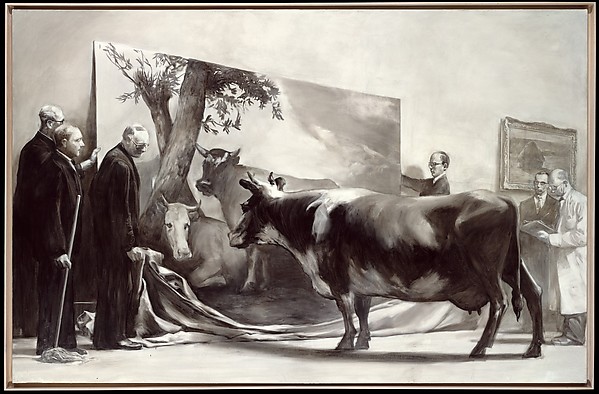
“Tansey presents a scene depicting a cow being presented a painting of two cows by the seventeenth-century painter Paulus Potter, as a group of educated-looking gentlemen in lab coats, perhaps connoisseurs (if I were a connoisseur of connoisseurs), stand attentively observing the cow. The art experts consult the cow to determine whether a work depicting cows is convincingly rendered. For the art connoisseurs, their cultivated gaze cannot judge the work adequately, because their vision is structured by aesthetic discourse. They need an innocent eye, a bestial eye. In the cow’s gaze and the anticipation of her reaction to the work, we have an echo of a similar story from antiquity concerning an artistic competition between the painters Zeuxis and Parhassios. For the competition, Zeus paints an image of grapes, fooling a bird, which comes to peck at the painting …”
— Richards, Derrida Reframed: Interpreting Key Thinkers for the Arts, 2008.
— Innocent Eye Test at the Metropolitan Museum
